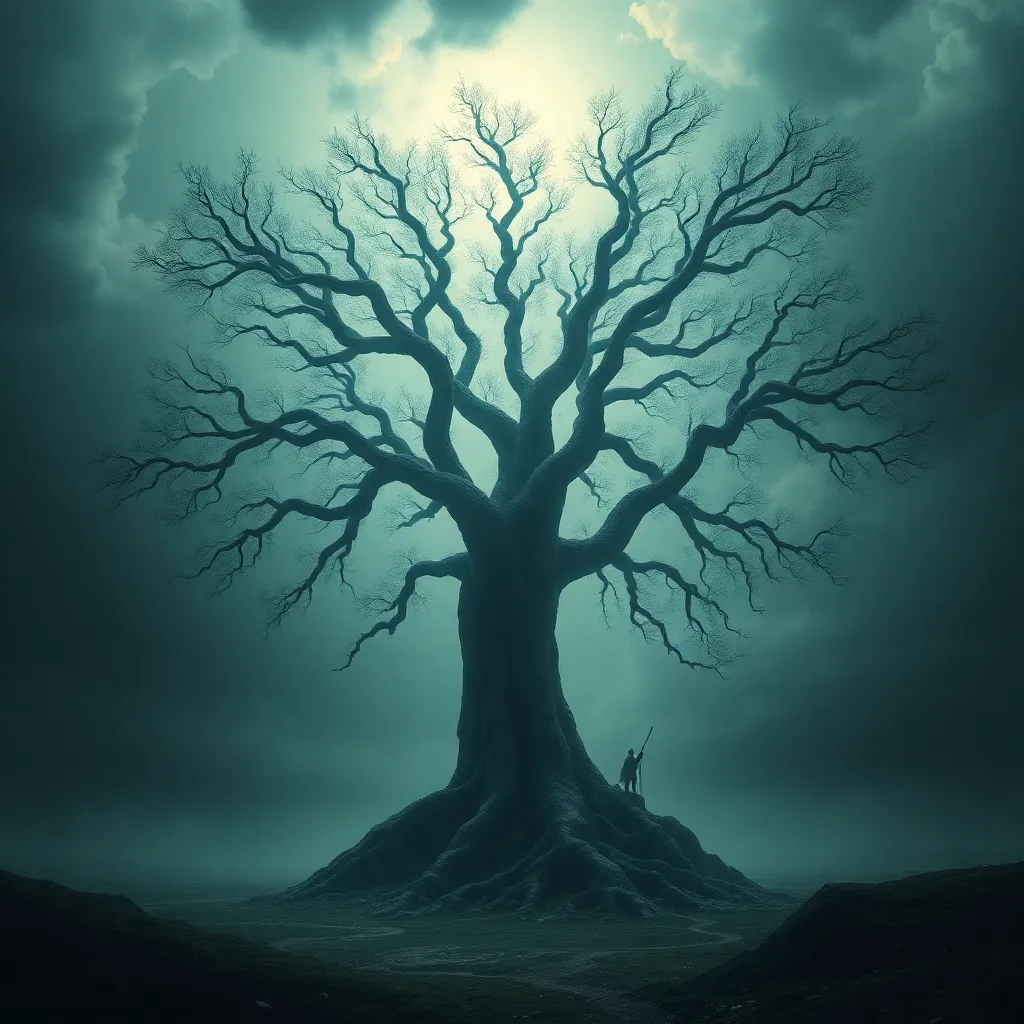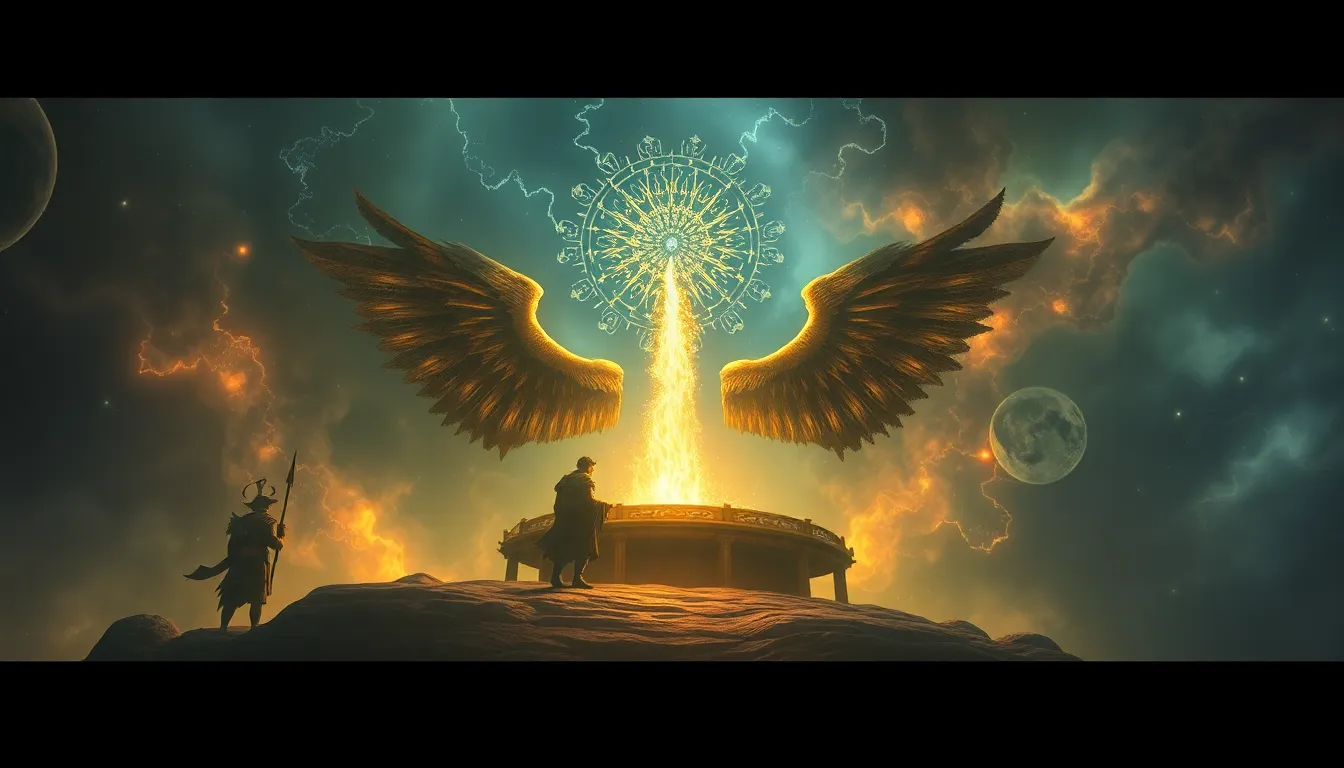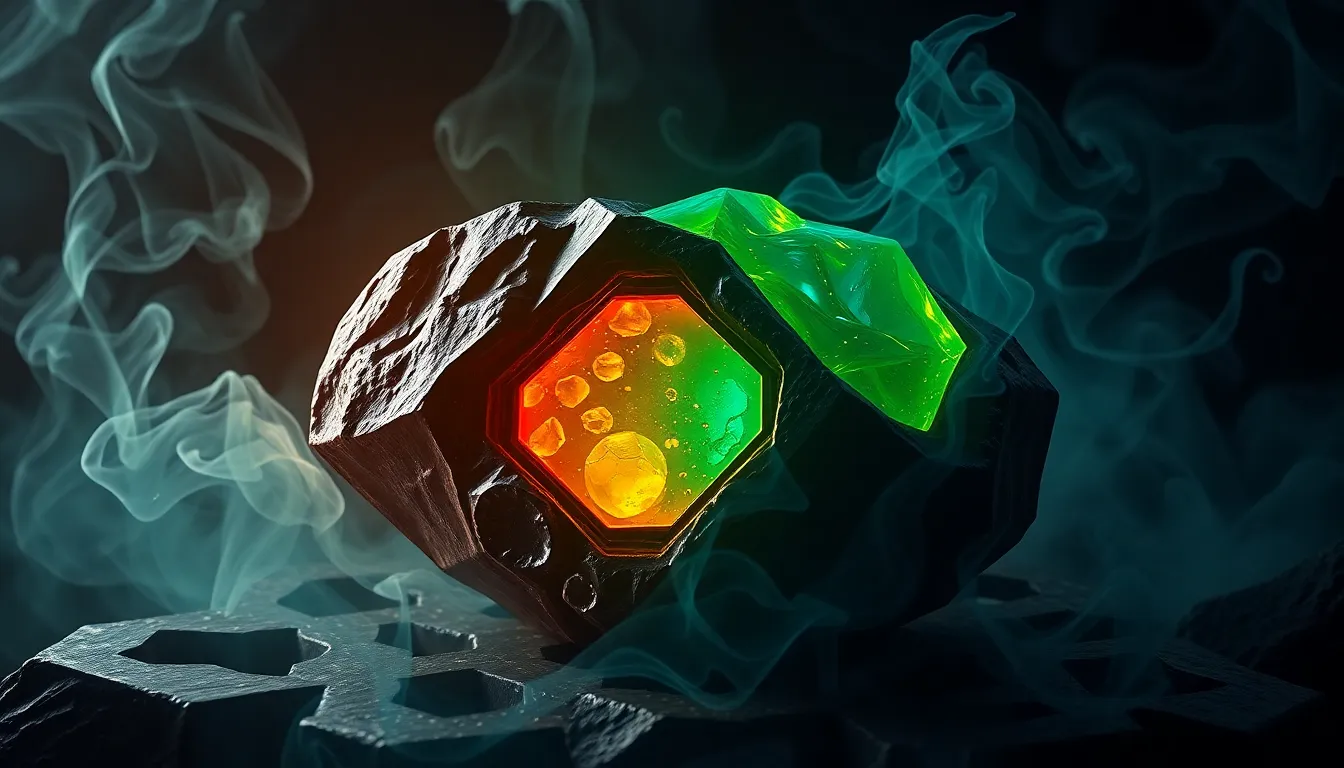The Prophecy of Ragnarok: Yggdrasil’s Fate and the End of the World
I. Introduction to Ragnarok
Ragnarok, often referred to as the “Twilight of the Gods,” is a pivotal event in Norse mythology that foretells the end of the world as we know it. It encompasses a series of cataclysmic events, including battles, natural disasters, and the death of major deities. The significance of this prophecy resonates deeply within Viking culture, symbolizing not only destruction but also the potential for renewal and rebirth.
This article will focus on the role of Yggdrasil, the World Tree, in the prophecy of Ragnarok, exploring its symbolism, connections to the nine realms, and its fate in the aftermath of the events that unfold.
II. Understanding Yggdrasil: The World Tree
Yggdrasil is an immense and central sacred tree in Norse cosmology. It is often depicted as an ash tree that connects all nine realms of existence, serving as a symbol of the universe’s interconnectedness.
- Description and Symbolism: Yggdrasil stands tall at the center of the cosmos, its branches reaching into the heavens and its roots delving deep into the earth. It symbolizes life, growth, and the cyclical nature of existence.
- Role in Norse Cosmology: Yggdrasil is not merely a tree; it is a cosmic axis (axis mundi) that bridges different worlds, including Asgard (home of the gods), Midgard (home of humans), and Hel (the realm of the dead).
- Connections Between Yggdrasil and the Nine Realms: The nine realms are interconnected through Yggdrasil, with each realm serving a unique purpose in the Norse mythological structure.
III. The Prophecy of Ragnarok: Key Elements
As Ragnarok approaches, various signs and omens signal the impending doom of the gods and the world. These signs are crucial to understanding the trajectory of the prophecy.
- The Signs and Omens: Foreboding events, such as the Fimbulwinter (a great winter), the betrayal of Loki, and the howling of wolves, indicate that Ragnarok is near.
- Major Figures Involved: Key players in the events of Ragnarok include Odin, Thor, Loki, and the giants, each representing different aspects of the conflict.
- The Concept of Fate: In Norse mythology, fate is often seen as an unchangeable force, with characters bound to their destinies, setting the stage for their inevitable roles in Ragnarok.
IV. The Events of Ragnarok
The climax of the prophecy unfolds through intense battles and dramatic confrontations that lead to the destruction of the world.
- Battles and Conflicts: The onslaught of giants and monsters, including the great serpent Jormungandr, leads to fierce battles against the gods.
- The Death of Key Gods: Major deities such as Odin, Thor, and Loki meet their fates, illustrating the tragic nature of the prophesied events.
- Roles of Mythical Creatures: Various beings, including Valkyries and Fenrir (the wolf), play significant roles in the unfolding chaos, each contributing to the overall narrative of destruction.
V. Yggdrasil’s Role in the Prophecy
Yggdrasil’s significance extends beyond its physical presence; it embodies the cycle of life, death, and rebirth, particularly relevant during Ragnarok.
- Significance During Ragnarok: As the world faces annihilation, Yggdrasil remains a steadfast entity, symbolizing hope amidst despair.
- Connection to Life, Death, and Rebirth: The tree’s roots and branches represent the duality of existence, showcasing how destruction can lead to new beginnings.
- Interpretations of Yggdrasil’s Fate: Post-Ragnarok, interpretations suggest that Yggdrasil will endure and continue to thrive, representing the resilience of life.
VI. Themes of Destruction and Renewal
The narrative of Ragnarok is steeped in themes of destruction leading to renewal, reflecting the cyclical nature of existence.
- Cyclical Nature of Destruction: In Norse mythology, endings are often followed by new beginnings, emphasizing the inevitability of change.
- Parallels to Other Mythologies: Many cultures express similar themes of apocalypse and rebirth, illustrating a universal human concern with mortality and hope.
- Idea of Rebirth: After Ragnarok, a new world is said to emerge, where surviving gods and humans will rebuild and repopulate the Earth.
VII. Modern Interpretations and Cultural Impact
The prophecy of Ragnarok and the symbolism of Yggdrasil have found resonance in contemporary media, literature, and popular culture.
- Influence on Media and Literature: Numerous films, books, and video games draw upon the rich tapestry of Norse mythology, bringing characters and stories to modern audiences.
- Resurgence of Interest: The popularity of franchises like Marvel’s Thor has sparked renewed interest in Norse mythology, making ancient tales accessible to new generations.
- Relevance Today: Discussions around Ragnarok’s themes of struggle, fate, and rebirth continue to resonate in today’s society, reflecting ongoing human experiences.
VIII. Conclusion: The Legacy of the Prophecy of Ragnarok
In summary, the prophecy of Ragnarok serves as a profound narrative that explores themes of destruction, fate, and renewal, all intricately tied to the fate of Yggdrasil. The World Tree stands as a testament to the resilience of life, embodying the cyclical nature of existence.
The enduring significance of Yggdrasil and the events of Ragnarok continue to captivate the imagination, bridging the gap between ancient mythology and contemporary life. Ultimately, the interplay between mythology and human experience offers profound insights into our understanding of existence, fate, and the potential for rebirth.



